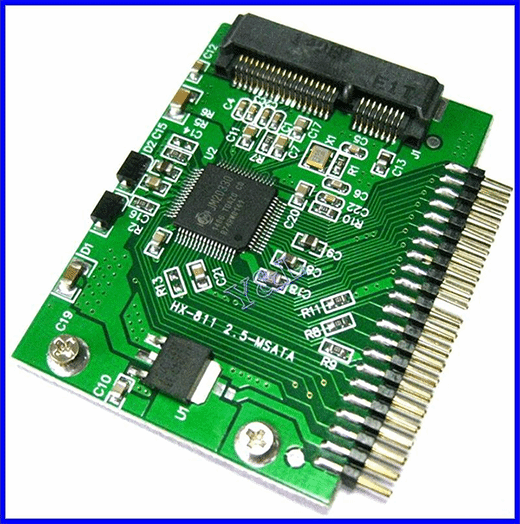SATA design specs for flash storage
In 2009, the SATA-IO consortium unveiled the mSATA specification for small form-factorsolid-state drives (SSDs). The M originally stood for mini, but that designation is no longer made and the specification is referred to as mSATA. An mSATA device is a flash drive that conforms to the SATA-IO protocol specification and is mainly used in laptops, netbooks and other portable computing devices. The mSATA specification maps Serial ATA signals to an internally mounted PCIe card in a computer's motherboard.
 The emerging M.2 SSD form factor is for ultrathin computing devices; it is generally considered to be an eventual replacement for mSATA.
The emerging M.2 SSD form factor is for ultrathin computing devices; it is generally considered to be an eventual replacement for mSATA.

SATA standards and revisions
The technical specifications governing Serial ATA device interfaces are authored by the nonprofit SATA-IO industry consortium. The consortium has made several revisions to SATA standards to reflect increased data transfer rates.
- SATA Revision 1 devices were widely used in personal desktop and office computers, configured from PATA drives daisy chained together in a master/slave configuration. SATA Revision 1 devices topped out at a transfer rate of 1.5 gigabits per second (Gbps).
- SATA Revision 2 devices doubled the transfer speed to 3.2 Gbps with the inclusion of port multipliers, port selectors and improved queuing.
- SATA Revision 3 interfaces support drive transfer rates up to 6 Gbps. SATA Revision 3 drives are backward-compatible with SATA Revision 1 and SATA Revision 2 devices, albeit with a lower transfer speed.
- SATA Revision 3.1 is an intermediate revision that added final design requirements for SATA Universal Storage Module for consumer-based portable storage applications.
- SATA Revision 3.2 added a specification known as SATA Express (SATAe), which supports simultaneous use of SATA ports and PCI Express (PCIe) lanes.